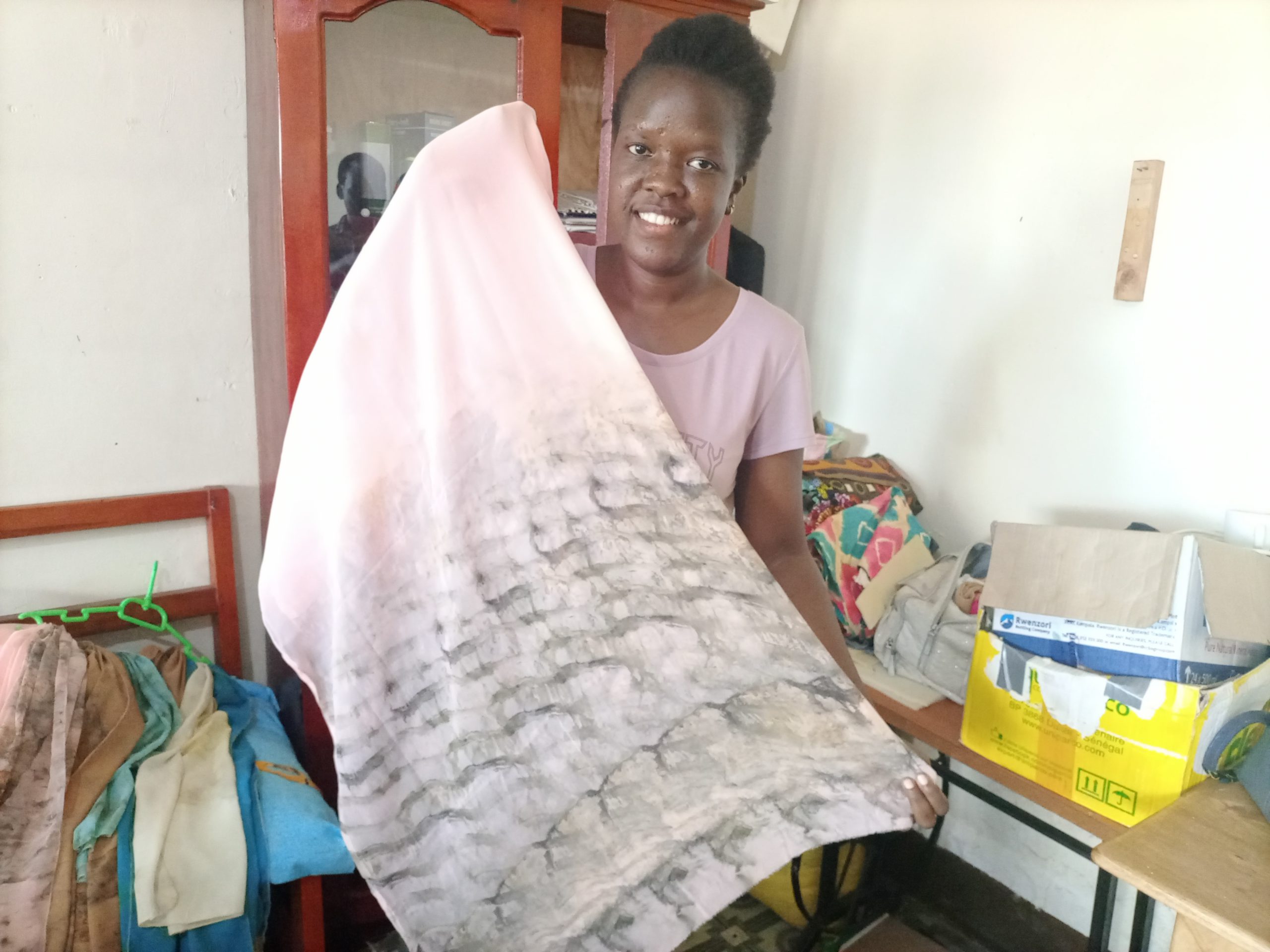Three years ago, Sharon Ajura’s love for “putting things together” drove her to Emiliana fashion school in Gulu City, Northern Uganda, where she enrolled for a year.
“I have always wanted to design something unique that many people appreciate when the owner wears it,” Ajura says.
However, due to financial constraints, Ajura dropped out midway into the course, having learned only the basics of cutting fabrics.
Despite her limited skills in tailoring, Ajura Styles, a fashion brand was established in July 2019, with the resolve to customize and improve on second-hand clothes by attaching different patches of fabrics and particular clothing items to them.
But then, Ajura’s trip to Vienna, Austria in December 2019, for a Seminar on Domestic Violence exposed her to a group of ladies working on eco-friendly fashion. Then a new idea hit her! To buy plain fabrics and make her prints using leaves, flowers, or grass.
Ajura calls it a sustainable brand because the prints she produces herself are environmentally harmless.
Uganda imports most of its already printed-on clothes that Ajura said harm both the environment and humans.
“Where do you think the ink used on clothes go? When the ink is poured into the water, the fish ingest it, and then we eat the same fish,” she said.
Most prints on fabrics are made of plastisol ink, which has some components of plastic. But they continue to be used as a standard ingredient for the mass production of clothes because of their user-friendliness.
According to research, the process of making plastisol releases chemicals, including dioxin, which according to the World Health Organisation, is dangerous to the environment and also carcinogenic.
Africa has for the past decade seen a rise in “eco-warriors” who are determined to fight against climate genocide. In September 2019, a huge group of climate “juries” from Kampala, Nairobi, Dakar, Durban, Johannesburg, and Cape Town, joined the world in a climate strike to demand urgent action against the climate crisis.
While many people still rely on groups to make their case against climate injustice known, Ajura has decided to tackle the matters herself, saying her goal to save the environment using sustainable fashion is not only safe but cheap.
“I get the materials from anywhere. But when I see and like a particular leaf that is on somebody’s premises, I ask for permission and they give me for free,” she said.
Then, she gets plain chiffon fabrics, washes them for traces of dust, lays the leaves on the fabrics according to the desired pattern, suspends them in a big saucepan over fire, where the fabrics meet steam. The steam then makes the leaves leave pigments that become indelible prints on the fabrics.
The leaves leave black, green, dark-green, or light-green prints, depending on the color and plant.
“After steaming, I pour the leaves back into the environment, where they rot and make good manure,” she said.
Ajura’s dream is to see people embrace sustainable fashion without relying on chemical-laden factory prints.
“We should explore our creative brain and use the available natural resources to make our prints,” she said.
In August 2020, Ajura started making her prints, and three months ago, she began to seam them into neckerchiefs and headwraps. These range from between UGX 10,000-UGX 15,000 ($2.84 -$4.25).
Her challenge is that many people are yet to understand sustainable fashion and include it in their closet.
“Unless I tell them the story behind the prints, they say, I don’t think I want that. I want the factory-made. This looks stupid,” she said.
However, Ajura thinks this challenge exists because she has not done much marketing yet because she continues to research on which materials attract the pigments better.
“I tried using cotton and I didn’t like how the prints came out. I have also tried satin and it does not leave any prints. Now, I only use chiffon.”
Brenda Akello, one of the buyers of Ajura styles, said; “The products are affordable and color patterns are beautiful. I would definitely recommend people to embrace it.”
When all the research is done, Ajura projects that she will need about UGX 5 billion ($1.4 million), to set up a production line to produce in mass, because manual steaming takes between 3-12 hours.
“It is a long process but along the way, I’m learning the things I should use and those I shouldn’t.”
“When I decided to drop out of the fashion school, I told myself that I would learn as I go along. And that is what is happening,” she said.
Ends







